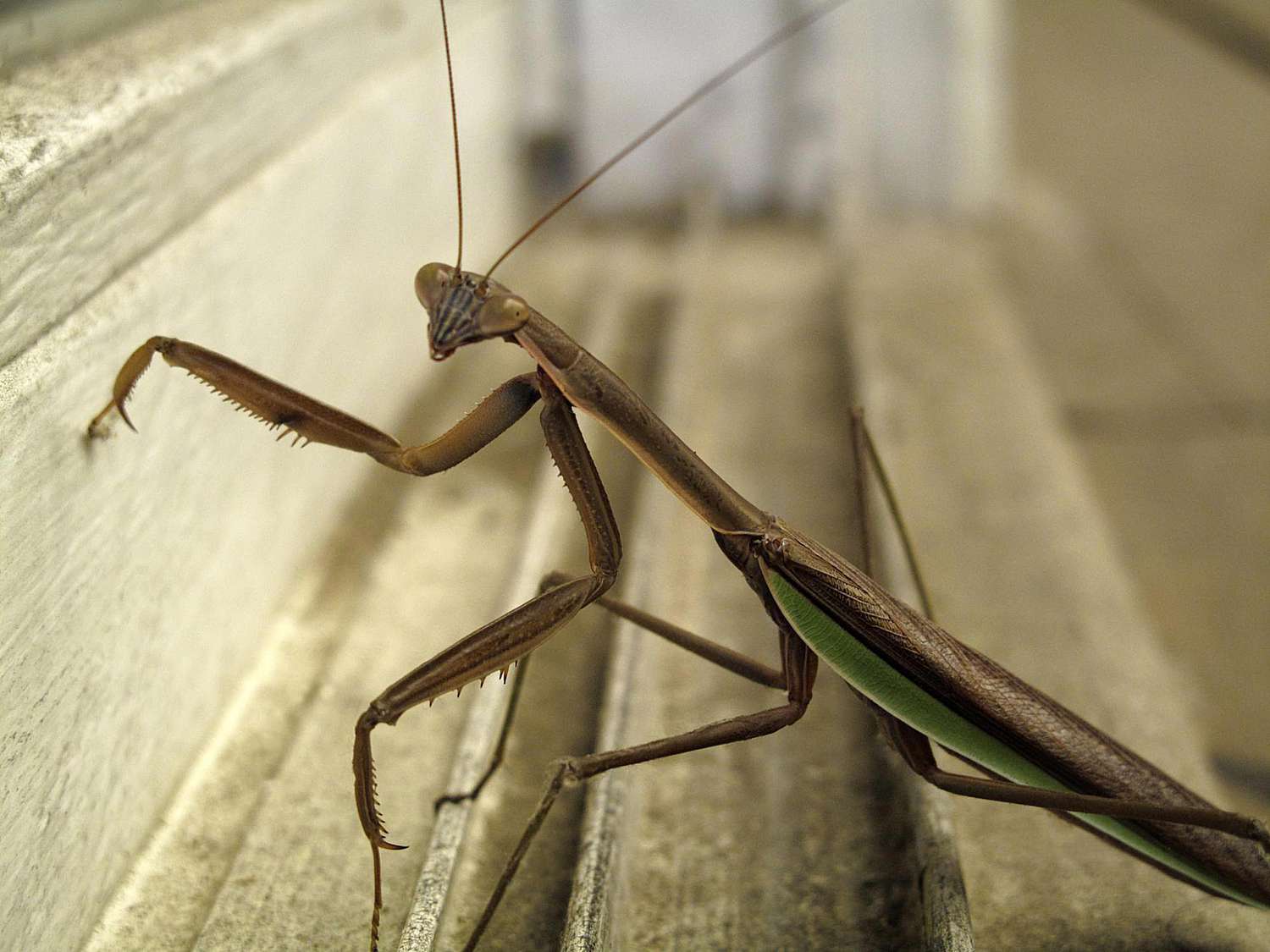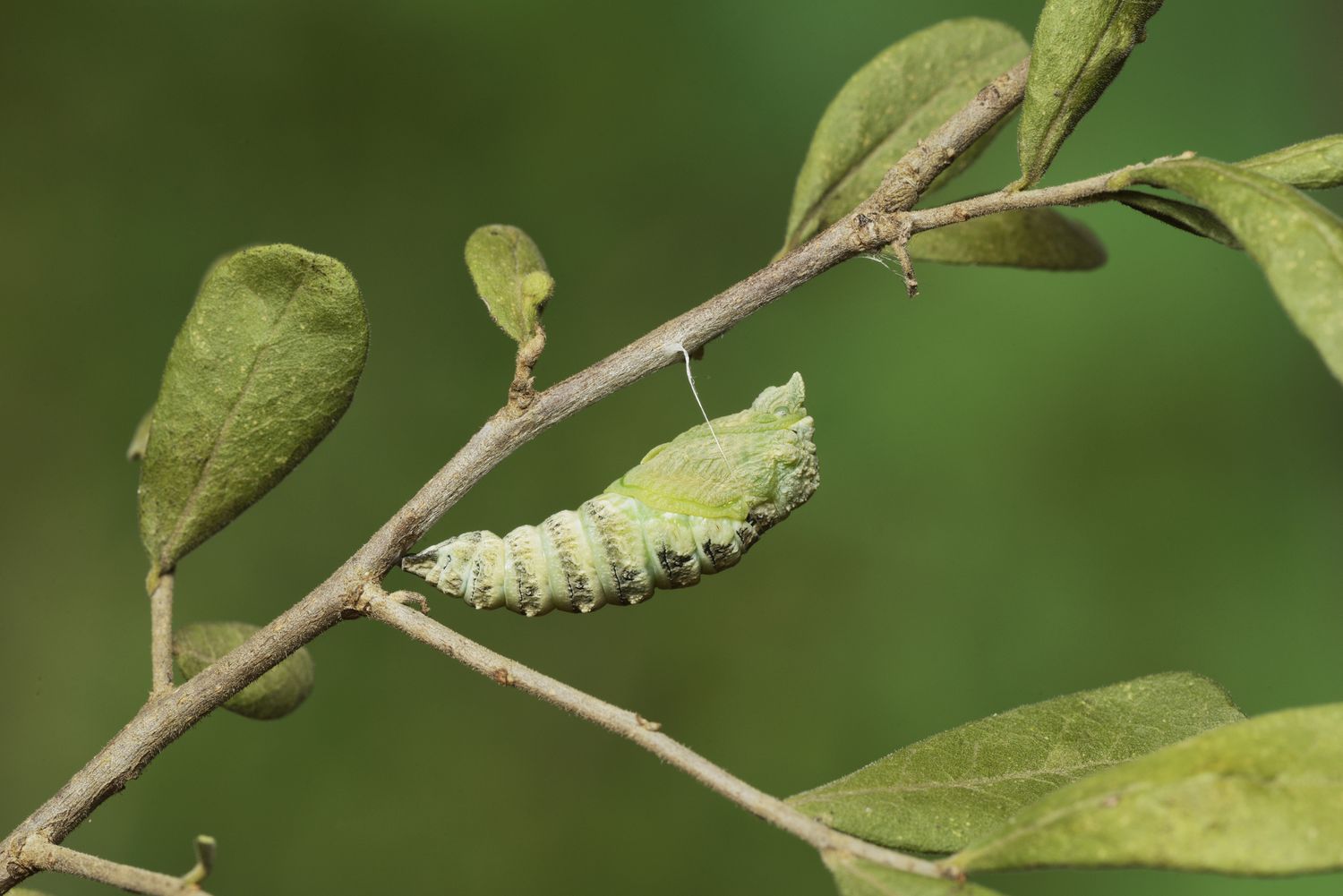Home>Gardening News and Trends>Latest News>Which Trait Below Is Present In Some Insects But Not In Other Protostomes?


Latest News
Which Trait Below Is Present In Some Insects But Not In Other Protostomes?
Published: December 8, 2023
Discover the latest news on the trait present in certain insects but not in other protostomes. Stay updated with the most recent findings in the world of biology.
(Many of the links in this article redirect to a specific reviewed product. Your purchase of these products through affiliate links helps to generate commission for Chicagolandgardening.com, at no extra cost. Learn more)
Table of Contents
Introduction
Welcome to the fascinating world of protostomes and insects! In the vast realm of the animal kingdom, protostomes represent a major branch that includes a diverse range of organisms. One group within this category that has captured our attention is insects. With their incredible diversity and remarkable adaptations, insects are undoubtedly one of the most successful and abundant creatures on Earth.
Before we delve into the unique trait found in some insects but not in other protostomes, let’s first understand what protostomes are. Protostomes belong to the larger group of animals called Bilateria, which are characterized by having bilateral symmetry and three germ layers during embryonic development.
Protostomes are further classified based on their early embryonic development, where the mouth develops before the anus. This trait sets them apart from deuterostomes, where the anus forms before the mouth. Protostomes encompass a wide range of animals, including mollusks, annelids, and arthropods, with insects being a prominent member of the arthropod group.
As we explore the unique trait found in some insects, it’s important to note that there are several shared characteristics among all protostomes. These include their basic body plan, with a front and a back end, a digestive system, and a nervous system. Additionally, most protostomes have a protective outer covering, such as an exoskeleton or a complex skin structure.
However, it’s the specialization and adaptations within these traits that set insects apart from other protostomes. Insects have evolved a plethora of remarkable characteristics that have enabled them to conquer and thrive in almost every habitat on Earth.
Definition of Protostomes
Protostomes are a major subgroup within the animal kingdom, characterized by a specific pattern of early embryonic development. This group encompasses a vast array of organisms, including arthropods, mollusks, and annelids, among others.
The term “protostome” refers to the way in which the mouth develops during embryogenesis. In protostomes, the mouth is formed before the anus, in contrast to deuterostome animals where the opposite is true.
This developmental pattern is significant as it provides insights into the evolutionary relationships between different animal groups. Protostomes are considered to have emerged earlier in evolutionary history than deuterostomes, with both lineages diverging from a common ancestor.
Protostomes exhibit bilateral symmetry, meaning that their bodies can be divided into two equal halves along a vertical plane. This symmetry allows for efficient movement and orientation in their environments.
Another defining characteristic of protostomes is their possession of a coelom, which is a fluid-filled body cavity that houses internal organs. The coelom provides protection for organs and enables efficient nutrient transport and waste removal systems.
Additionally, protostomes are triploblastic, meaning they have three primary germ layers during embryonic development. These layers, known as the ectoderm, mesoderm, and endoderm, give rise to different tissues and organs in the adult organism.
Overall, the definition of protostomes revolves around their specific developmental pattern and shared characteristics, which distinguish them from other animal groups. Understanding this definition provides a solid foundation for further exploring the unique features and traits of protostomes, including the fascinating world of insects.
Traits Common to Protostomes
Protostomes share several key traits that define their identity as a distinct group within the animal kingdom. These traits provide a foundation for understanding the evolutionary relationships and characteristics of different protostome organisms.
1. Bilateral Symmetry: All protostomes exhibit bilateral symmetry, where their bodies can be divided into two equal halves along a vertical plane. This symmetry allows for efficient movement, sensory perception, and coordination in their environments.
2. Coelom: Protostomes possess a coelom, a fluid-filled body cavity located between the body wall and the internal organs. The coelom provides protection for organs and facilitates movement, circulation, and the development of more complex body systems.
3. Triploblastic Development: Protostomes are triploblastic, meaning they develop from three primary germ layers: the ectoderm, mesoderm, and endoderm. These layers give rise to different tissues and organs in the adult organism, enabling them to carry out various functions.
4. Well-Developed Digestive System: Protostomes typically have a well-developed digestive system, with specialized structures for the intake, breakdown, and absorption of nutrients. This allows them to efficiently extract energy from their food sources.
5. Central Nervous System: Most protostomes possess a central nervous system, consisting of a brain and a ventral nerve cord. This system coordinates sensory information, movement, and behavioral responses in the organism.
6. Exoskeleton or Complex Skin Structures: Many protostomes have an outer covering that provides protection and structural support. This can take the form of an exoskeleton, as seen in arthropods, or complex skin structures, such as the cuticle found in annelids.
These common traits among protostomes lay the foundation for their diverse adaptations and ecological success. While these characteristics provide a framework for understanding protostomes as a whole, it is the unique traits within each subgroup that truly distinguish them and contribute to their remarkable diversity.
Unique Traits of Insects
Among the vast array of protostomes, insects stand out for their incredible diversity and remarkable adaptations. With over one million known species and potentially millions more yet to be discovered, insects have thrived and evolved to occupy almost every imaginable habitat on Earth. Here are some of the unique traits that make insects truly extraordinary:
1. Flight: Insects were the first group of organisms to develop powered flight. The ability to fly has allowed them to access new food sources, escape predators, and explore new territories. From delicate butterflies to agile dragonflies, the emergence of flight revolutionized the way insects interact with their environment.
2. Metamorphosis: Insects undergo a process of metamorphosis, transforming from juvenile stages (larvae or nymphs) into their adult form. This remarkable adaptation enables insects to exploit different ecological niches and optimize their survival strategies. From the caterpillar turning into a butterfly, or the grub unfolding its wings as a beetle, the diverse forms that insects take during their life cycle are truly astonishing.
3. Highly Specialized Mouthparts: Insects possess a wide variety of specialized mouthparts that allow them to feed on a wide range of food sources. From the piercing-sucking mouthparts of mosquitoes and bedbugs to the chewing mouthparts of grasshoppers and beetles, insects have evolved an impressive array of adaptations to obtain and process their nourishment effectively.
4. Social Behavior: Many insect species, such as ants, bees, and termites, exhibit complex social organization. They live in highly organized colonies, with individuals assigned specific roles of workers, soldiers, or reproductive members. This social structure enables them to achieve remarkable feats of cooperation, communication, and division of labor.
5. Exoskeleton: Insects have an external skeleton, known as an exoskeleton, which provides support, protection, and muscle attachment points. This exoskeleton is made up of a tough and flexible material called chitin. It allows insects to resist desiccation, withstand physical challenges, and provides structural support for their diverse body forms.
6. Sensory Adaptations: Insects possess an incredible array of sensory adaptations. They have compound eyes that can detect a broad range of colors and movements, antennae that can detect chemical signals, and specialized receptors for sensing vibrations, temperature, and even sound. These sensory adaptations allow insects to perceive and respond to their environment in unique ways.
These unique traits have contributed to the tremendous success and adaptability of insects. Their ability to occupy various ecological niches, their diversity of forms and behaviors, and their resilience in the face of changing environments highlight the remarkable evolutionary advancements that insects have undergone over millions of years.
Trait Present in Some Insects but Not in Other Protostomes
While all protostomes share certain common traits, there is one particular characteristic that is present in some insects but not in other protostomes. This unique trait is the ability to produce and utilize bioluminescence. Bioluminescence refers to the emission of light by living organisms through a chemical reaction.
Among insects, bioluminescence is most notable in certain groups such as fireflies, glowworms, and click beetles. These insects possess specialized light-emitting organs called photophores, which contain a chemical called luciferin. When luciferin combines with an enzyme called luciferase, it produces light.
The purpose of bioluminescence in insects can vary. In some cases, it serves as a means of communication and recognition between individuals of the same species. Fireflies, for example, use their flashing light patterns to attract mates. The synchronized flashing displays that occur in some firefly species are truly mesmerizing and are a result of intricate communication systems.
Bioluminescence in insects can also have defensive functions. Some species use their glowing capabilities to deter predators by warning them of their unpalatability or toxicity. The prominent luminous patterns of certain click beetles, for instance, act as a warning signal to potential predators.
Furthermore, bioluminescence can also play a role in prey attraction. Certain species of glowworms use their light to lure in prey, typically small insects, by mimicking the appearance of stars or other celestial objects. Once the unsuspecting prey comes close, the glowworm captures and consumes it.
It’s important to note that while bioluminescence is predominantly observed in insects, it is not exclusive to them. Bioluminescent organisms can be found across various taxonomic groups, including marine organisms such as plankton, jellyfish, and certain fishes.
However, the ability to produce and control bioluminescence is a unique trait found in some insects that sets them apart from other protostomes. This fascinating adaptation showcases the extraordinary diversity and complexity of life on Earth.
Examples of Insects with the Unique Trait
Several insect species showcase the remarkable trait of bioluminescence, highlighting the diverse ways in which it has evolved and its significance within their respective ecological contexts. Here are a few notable examples of insects that possess this unique trait:
1. Fireflies (Family Lampyridae): Fireflies are perhaps the most well-known bioluminescent insects. The males emit flashes of light in rhythmic patterns to attract females for mating. Each species has its own distinctive flash pattern, acting as a signal for species recognition. Firefly displays, seen on warm summer nights, are not only aesthetically captivating but also serve an essential purpose in reproduction.
2. Glowworms (Family Phengodidae and Rhagophthalmidae): Glowworms, or glow beetles, are another group of insects known for their bioluminescence. These larvae emit a soft greenish light to attract prey into sticky silk threads, where they are then captured and consumed. The adult females, on the other hand, often lack wings and do not produce light themselves.
3. Click Beetles (Family Elateridae): Click beetles are known for their unique ability to bioluminesce, often through small light-emitting spots on their body. This adaptation not only plays a role in mate selection but also helps in deterring potential predators. When threatened, click beetles can generate a clicking sound by snapping their body, which creates a startling noise and often allows them to escape from dangerous situations.
4. Railroad Worms (Family Phengodidae): Railroad worms, also known as glowworm beetles or lanternflies, exhibit bioluminescence during their larval stage. They possess a series of light-emitting areas on their body segments, creating a glowing trail resembling a moving train track at night. The emitted light is believed to serve as a warning signal to predators.
5. Cucujus Clavipes (Flat Bark Beetles Family Cucujidae): Cucujus clavipes is a species of flat bark beetle found in North America. The larvae of these beetles produce a blue-green light, which they use to attract prey. The glow helps them lure in small slugs and snails, which they then capture and consume.
These examples only scratch the surface of the incredible variety of bioluminescent insects. Each species has unique adaptations and specific ecological roles associated with their bioluminescence, demonstrating the fascinating ways in which nature has shaped these insects to thrive in their respective environments.
Conclusion
The world of protostomes and insects is filled with fascinating traits and adaptations that have enabled these creatures to thrive and conquer various environments. While protostomes share common characteristics such as bilateral symmetry, a coelom, and triploblastic development, insects possess unique traits that set them apart from other protostomes.
One remarkable trait found in some insects but not in other protostomes is the ability to produce and utilize bioluminescence. Insects like fireflies, glowworms, click beetles, and others have evolved the capability to emit light through chemical reactions within specialized organs. Bioluminescence serves a variety of purposes for these insects, including communication, defense, and prey attraction.
Examples of such bioluminescent insects demonstrate the incredible diversity and complexity of adaptations within the insect world. Fireflies flash their lights to communicate with potential mates, while glowworms use their glow to lure prey. Click beetles employ bioluminescence as a means to deter predators, and railroad worms create a glowing trail as a warning signal.
Understanding the unique traits of insects not only showcases their remarkable abilities but also emphasizes the adaptability and resilience of life on Earth. These traits have allowed insects to occupy almost every imaginable habitat and ecological niche, making them one of the most successful and abundant groups of organisms on the planet.
By exploring the traits common to protostomes and the exceptional characteristics of insects, we gain a deeper appreciation for the incredible diversity and complexity of life. Whether it’s the ability to fly, undergo metamorphosis, or produce bioluminescent light, insects continue to captivate our curiosity and inspire future discoveries in the realm of the natural world.






